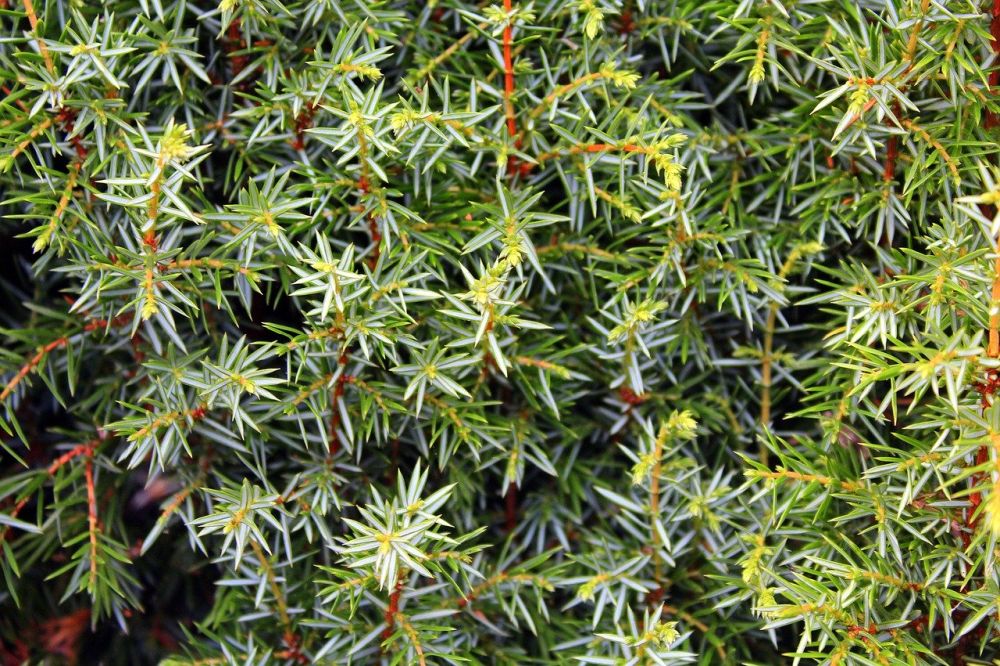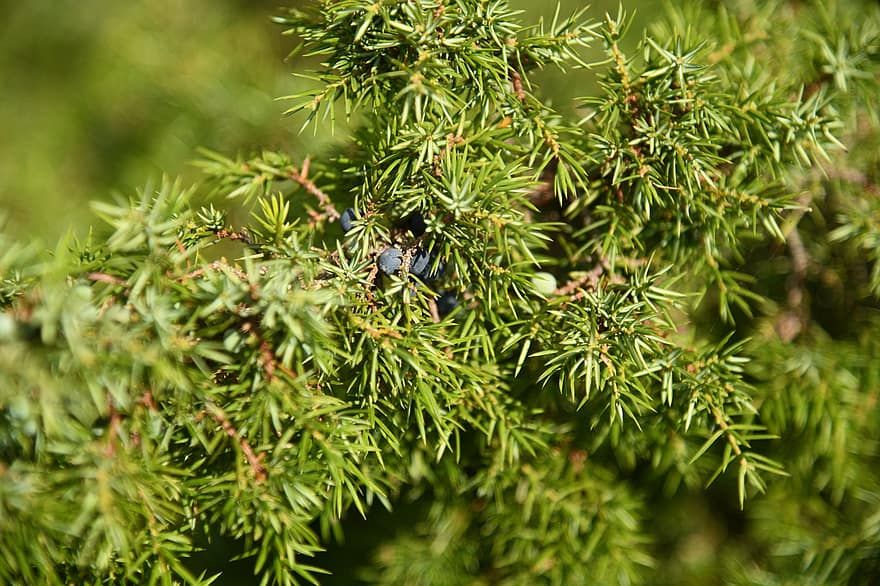Juniper Shrubs: Care For The Juniper Plant (Guide)
When you think of an ornamental garden plant, juniper is usually the first name to come to mind. The reasons for its popularity among homeowners and garden aficionados are many and varied. Juniper is a hardy shrub that grows just about in any region and soil. It takes many shapes, colors, and sizes to suit your landscaping needs. Not to mention that it’s a plant for all seasons with its own unique medicinal benefits. So what’s there not to like?
It’s no wonder, then, that juniper is the number one choice in gardens, lawns, borders, hillsides, and slopes. So how do you grow juniper and make the most of its ornamental values? And what type of juniper shrub works best in which locations? Read on to find out all you need to know about this versatile and wonderful shrub.
Know your Juniper
As coniferous plants of the cypress family, junipers (Juniperus) have different types. They can be trees that reach 130 feet tall, or care-free growing shrubs to add style and class to your garden. They also grow as ground covers only 6 inches high.
This variety in shapes and sizes is only matched by the color variations that the plant acquires and changes depending on the season. From bright gold and green to steely blue and many shades in between, you will find the juniper type that works best for you.
Apart from their ornamental values, junipers are often used for more practical purposes. When a slope or a hillside is under threat of erosion a robust layer of juniper groundcover protects the topsoil and preserves the integrity and appearance of the spot.
All in all, there are between 50 to 60 species of the juniper family. They are all evergreens and can adapt to harsh temperatures. Junipers grow in the arctic as much as they flourish in the tropics. These plants love the sun and need plenty of light. The leaves start as needle-shaped and turn into scale-like shapes. During the winter the leaves turn into a sedated bronze color. The flowers are usually yellow and appear in the spring.
How to Plant Juniper in Easy Steps
When planting juniper, the best time is either during the spring or the fall. The weather is mild and doesn’t stress the new plants with either the scorching heat or the freezing cold. The spot you choose for planting needs to get plenty of sunlight. If the weather gets too hot during the summer, then a little shade will benefit the plants. Here are the steps to plant junipers.
- Prepare the soil with about 20 percent mixture of organic matter.
- Dig a hole wider and deeper than the root mass of the plant.
- Make sure that the depth of the hole matches the original hole the juniper was planted in before.
- Place the juniper in the hole and fill it with soil.
- Press the dirt gently to remove any pockets of air.
- Water the plant immediately after planting and again on a weekly basis depending on the weather.
- Keep enough space between the plants to improve ventilation and prevent fungal infections.
Caring for Junipers
One of the reasons juniper is so popular is that it practically requires little or no caring. The plant takes care of itself. It adapts well to different types of soil and the changing seasons don’t seem to stunt its growth or impact it in any meaningful way.
That said, juniper is a living plant and as such it still needs water and nutrition to survive and grow. The soil is an important factor in that growth. Junipers prefer rich and slightly acidic soil. Drainage is crucial for the survival of the roots. Junipers don’t do well if their roots are submerged in stagnant water.
Water Needs
Once the juniper takes root, it hardly needs any irrigation on your part. Even in dry soil, the roots of the coniferous plant are deep enough to find moisture and nutrition in the soil. That said, you still need to water the new juniper right after planting it. It also needs to be watered once a week or every other week until it establishes.
Overall, juniper has a low tolerance for soggy or constantly wet soil. So always plant it in a spot that has good drainage. Too much water suffocates the roots and causes diseases and infections.
Fertilizer and Mulch
Fertilizers are not a necessity as far as junipers are concerned. They can survive on their own without the need for supplements. However, if you prefer to use a fertilizer, then a balanced one will do. Spread a slow-release fertilizer around the roots sparingly and water the plant to avoid burns.
Mulch on the other hand can help the soil retain moisture. So during the hot months, sprinkle a thin layer, about 1 to 2 inches thick, of pine straw or shredded wood mulch near the base of the plant. It will prevent weeds from growing around the junipers. Make sure the mulch is cured and at least one year old.
Pruning
Junipers are care-free and wild plants. Their natural look is part of their charm. So you’ll rarely need to prune your juniper shrubs or groundcovers. However, occasionally, you might need to use a pair of sharp pruning scissors to remove dead twigs, any stray growths, and give the shrub a shapely look. Avoid over-pruning older plants since they don’t regenerate lost growth quickly enough.
Pests and Disease
Hardy plants as they are, junipers are still prone to diseases and certain bugs can plague them and cause serious health issues. Most notably of these pests are bark beetle, sawfly, juniper needle miner, bagworm, juniper twig girdler, juniper webworm, scale, and spider mites among others.
Junipers also succumb to diseases such as phytophthora root rot, cedar rust, and twig and tip blight. Most of these diseases are caused by badly drained soil, lack of air circulation, or proximity to other trees such as apple trees.
As for foraging animals, they’ll usually steer clear from junipers. Neither the needles on the branches nor the bitter tastes of the leaves make the plant palatable to animals such as deer. So your juniper shrub is safe from the ravages of cud-chewing animals except when there’s a food scarcity in the area.
Choose the Right Juniper for your Needs
With up to 60 juniper species to choose from, sometimes you might find it hard to land on the right type of juniper to suit your specific needs. But for the sake of simplification, we can break down the types of juniper according to 3 main purposes.
- Landscaping and privacy: This is by far the most common usage of junipers. As evergreen plants that have different colors and sizes, they come in handy when you want to add a touch of beauty to your landscape or protect your privacy from prying eyes. Junipers also work as excellent foundation plantings and fit nicely in hedges and screenings.
- Protection against erosion: Groundcover junipers are excellent plants to protect a slope or hillside area that is at high risk of erosion or landslides.
- Ornamental purposes: Other types of juniper, especially the dwarf species, can grow in containers. They maintain their vivid colors all year round and add a touch of cheerfulness and great ambiance to the surroundings.
Best Practices for Landscaping with Juniper
The various species of juniper all have a role to play in your life. If used the right way, junipers can transform your house and garden.
- Instead of having a fence around the garden, you can plant a juniper shrub that acts both as a fence and an ornamental plant at the same time.
- Medium-sized junipers can form rows of lively borders that break your landscape or garden into manageable and stylish divisions.
- A dwarf juniper in a container near your gate or entryway becomes a fixture that sheds green and lively vibes all year round.
- Tall juniper trees protect our garden and property from strong winds and offer shade in the summer months.
- Small junipers have a place inside the house and under the windows. They don’t obstruct the view since junipers are slow growers normally.
- Certain junipers with vivid colors and appealing shapes can be planted as the focal point in your garden or lawn.

